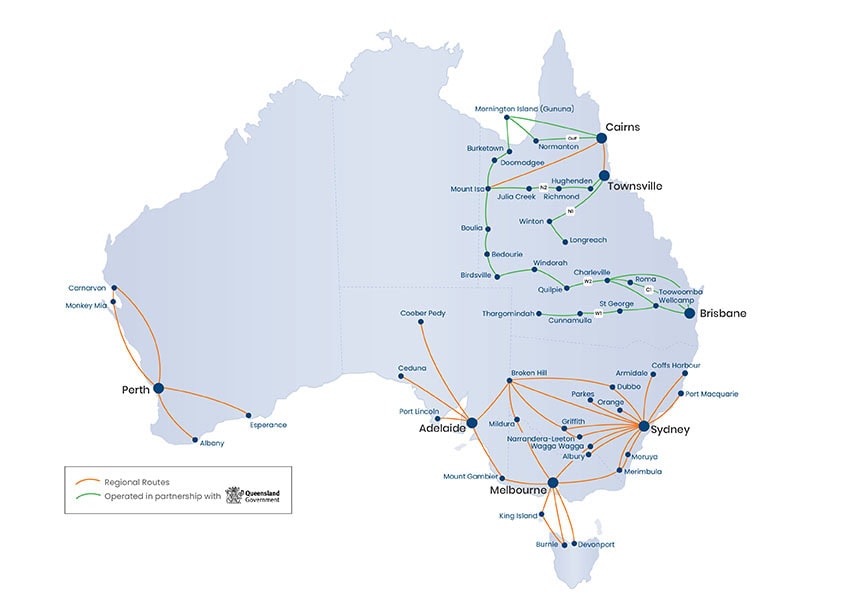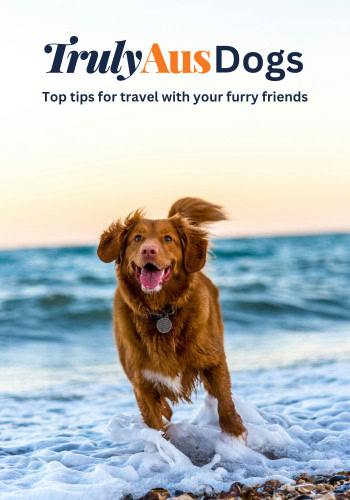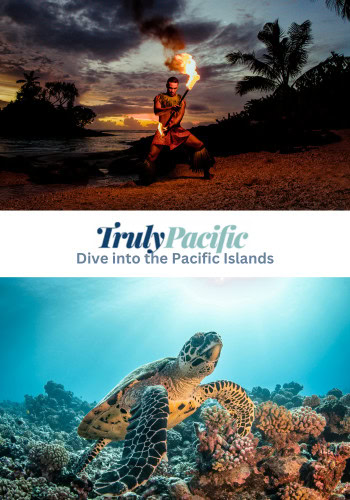Past and present converge at Innamincka, an isolated but thriving town in Australia’s rugged outback.
The tiny outpost of Innamincka started its life in 1882. It was a police depot on Cooper Creek in north-east South Australia at the intersection of two busy stock routes. Surrounding the town are the Strzelecki and Sturt Stony deserts and Innamincka Regional Reserve. It’s still a beacon for those travelling through the beautiful arid landscape on the South Australian and Queensland border. The wildfires and deeply cracked soil inhibit tree growth in favour of Mitchell grass in this sunburnt country.

Innamincka from above
From the air, Innamincka is just a scattering of small buildings for the 12 permanent residents with an unsealed airstrip. On closer inspection it is a welcoming township and gateway to a fascinating region.
I’m flying to Innamincka on a private charter Cessna Caravan on a three-day outback adventure. Cruising west from the Gold Coast to Birdsville at 350km/hr, we make stops at Brisbane and Charleville. After overnighting at the iconic Birdsville Hotel, the plane passes over the crusted white salt plains of Lake Eyre to the isolated outpost of William Creek. We continue on to Innamincka and the historic Dig Tree made famous by explorers Burke and Wills.
Pilot Peter Gash of Seair Touring tells his passengers that from the air Innamincka has a lunar landscape. The contrast to the green of Cooper Creek makes him feel like he’s landing on the dark side of the moon. The landing strip is a short ride from town where the Innamincka Hotel, Trading Post and the Inland Mission Hospital Museum and Visitor Interpretive Centre await.
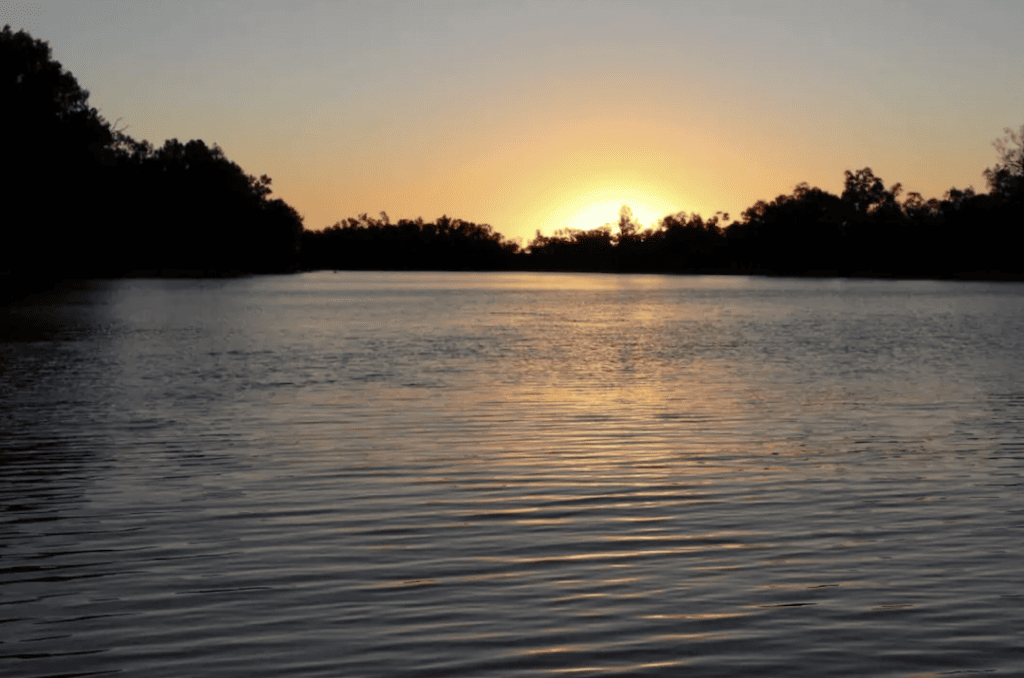
Sunset cruise on Cooper Creek
As unlikely as it sounds, one of the highlights of visiting this desert area is a sunset cruise on Cooper Creek. More like a river than a creek, the Cooper is a permanent water source with wide stretches of navigable water.
It’s one of the world’s largest unregulated water catchments. Cooper Creek travels around 1,300 km from its source west of Queensland’s Darling Downs to Lake Eyre in South Australia. It’s one of two major river systems draining into the Lake Eyre basin, although the creek rarely completes a flow.
I’m eager to catch sunset glistening on Cooper’s waters. I drop my bags at the hotel and head straight back out. On an Inna Cruise excursion, I board a small ‘Kingfisher’ boat and explore Cullymurra Waterhole. It’s a wine and cheese river putter with entertainment provided by pelicans, wedge-tailed eagles and corellas having a last squawk before dusk.
You can also hire a kayak to explore the creek. It’s a journey best untaken in the morning, when the wind is low, the water is still, and the sun is on your back.

The tragic tale of Burke and Wills
The Dig Tree is just north of Innaminka, just over the border in Queensland. It has earned it’s status in Australian history as somewhat of a national icon.
Standing tall above Cooper Creek, the 200-year-old Coolibah tree’s wide branches provide a peaceful respite from the sun. Today, you’ll find no hint of its part in the explorer’s tragedy nearly 160 years ago. This is where William Brahe carved instructions for the Burke and Wills exploring party to dig for stores when they returned from attempting to reach the Gulf of Carpentaria. The interpretive centre at the Dig Tree site explains the expedition’s full story including the deaths of Burke and Wills from starvation.
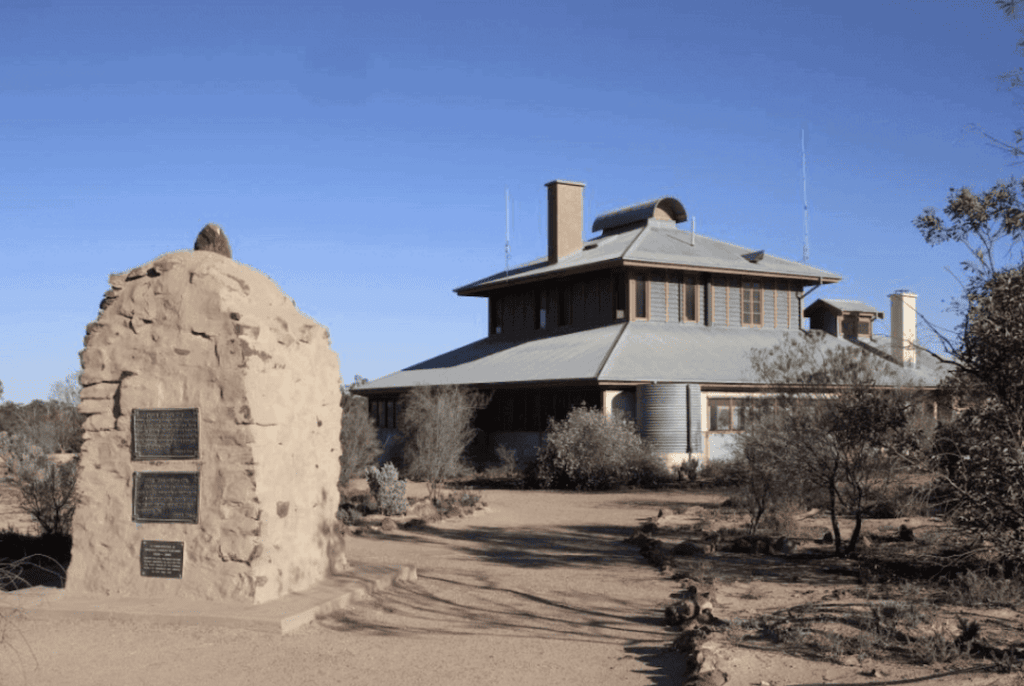
Innamicnka’s old outback pub
There was a time when the bottle dump at Innamincka was bigger than the hotel. Faced with regular but intermittent visitors which saw opened kegs sit for weeks before they were finished, the pub owners decided only to sell bottled beer.
Of course, that meant lots of bottles and the empties created a two-metre-high dump over hundreds of metres. Nothing remains of the dump today. The bottles were washed away in the legendary 1956 Channel Country floods along with most of the pub.
From its heyday in the 1900s, droughts took their toll on Innamincka and the town declined. The discovery of underground gas fields at Moonie and the increasing popularity of exploring the outback revived the town in the 1970s.
Innamincka gets a facelift
For those who have emerged from days travelling on the Strzelecki Track or camping in the rugged Innamincka Reserve, the new Innamincka Hotel offers a restful haven. Clean white sheets, airconditioned rooms and spotlessly clean showers with plenty of running water.
Guests will find a traditional, well stocked front bar, filled with outback treasures and local memorabilia. It sits alongside the newish 100-seat Outamincka Bar restaurant where I can guarantee a good feed. Innamincka also boasts an outback cinema which screens on a billboard in the pub’s front yard, along with Australia’s most remote 18-hole mini golf course. Like any good pub, there are karaoke nights as well.
When it comes to the outback essentials of beer and bed, Innamincka offers an icy beverage and a warm country welcome.
Leaving the town by air, it’s not long before the landscape changes to the black and white creek trails of the Channel Country. Red patches of desert rock followed, with no visible signs of life.
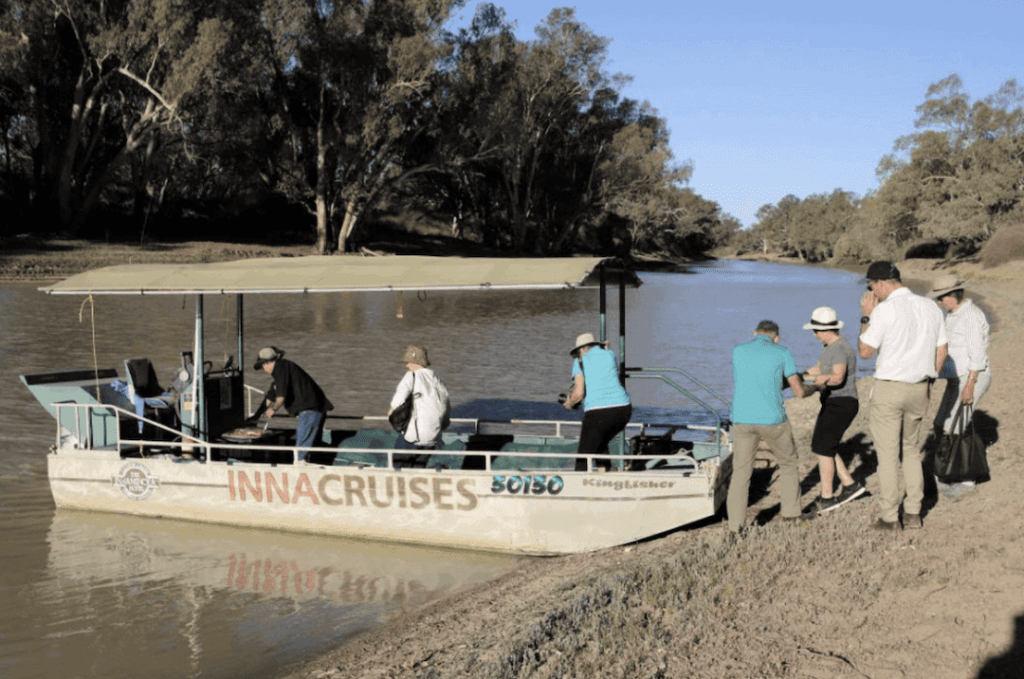
Things to know before you go
Innamincka’s name comes from the Yandruwandha words ‘Yini’ and ‘mingka’ meaning ‘your waterhole’.
A hat with a fly net is essential equipment for Innamincka.
At seven kilometres long, Cullymurra Waterhole is Australia’s largest billabong.
Simpson Desert parks close from December 1 to March 15 when summer temperatures range between 40 to 50 degrees Celsius.
To discover what else is on offer in outback South Australia, click here.


